Kookhoi Kim
SoftGroup++: Scalable 3D Instance Segmentation with Octree Pyramid Grouping
Sep 17, 2022
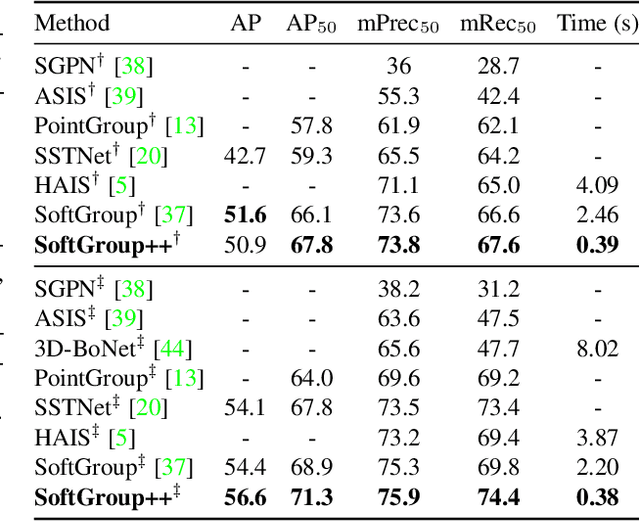
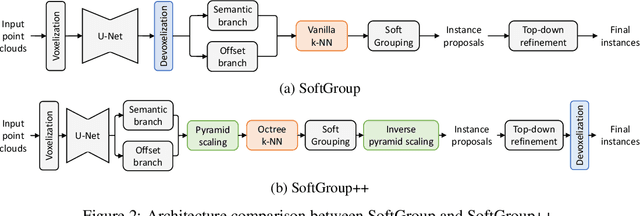
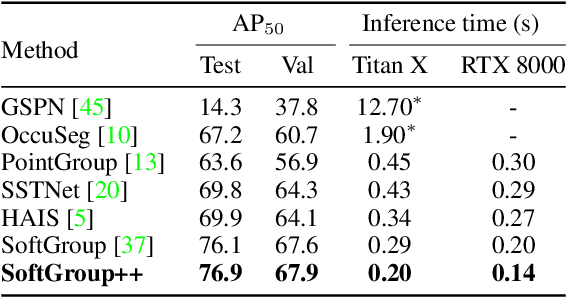
Abstract:Existing state-of-the-art 3D point cloud instance segmentation methods rely on a grouping-based approach that groups points to obtain object instances. Despite improvement in producing accurate segmentation results, these methods lack scalability and commonly require dividing large input into multiple parts. To process a scene with millions of points, the existing fastest method SoftGroup \cite{vu2022softgroup} requires tens of seconds, which is under satisfaction. Our finding is that $k$-Nearest Neighbor ($k$-NN), which serves as the prerequisite of grouping, is a computational bottleneck. This bottleneck severely worsens the inference time in the scene with a large number of points. This paper proposes SoftGroup++ to address this computational bottleneck and further optimize the inference speed of the whole network. SoftGroup++ is built upon SoftGroup, which differs in three important aspects: (1) performs octree $k$-NN instead of vanilla $k$-NN to reduce time complexity from $\mathcal{O}(n^2)$ to $\mathcal{O}(n \log n)$, (2) performs pyramid scaling that adaptively downsamples backbone outputs to reduce search space for $k$-NN and grouping, and (3) performs late devoxelization that delays the conversion from voxels to points towards the end of the model such that intermediate components operate at a low computational cost. Extensive experiments on various indoor and outdoor datasets demonstrate the efficacy of the proposed SoftGroup++. Notably, SoftGroup++ processes large scenes of millions of points by a single forward without dividing the input into multiple parts, thus enriching contextual information. Especially, SoftGroup++ achieves 2.4 points AP$_{50}$ improvement while nearly $6\times$ faster than the existing fastest method on S3DIS dataset. The code and trained models will be made publicly available.
SoftGroup for 3D Instance Segmentation on Point Clouds
Mar 03, 2022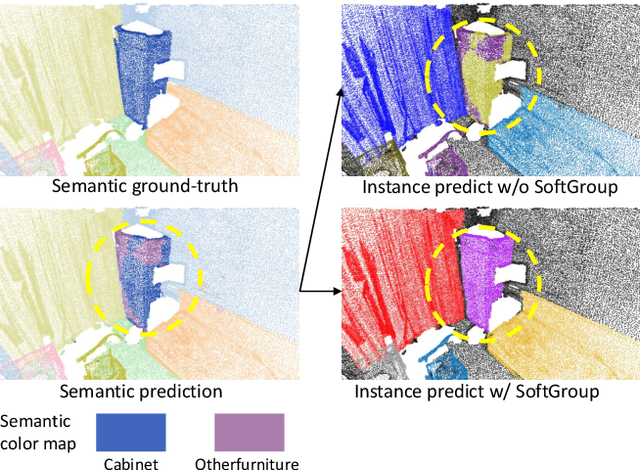
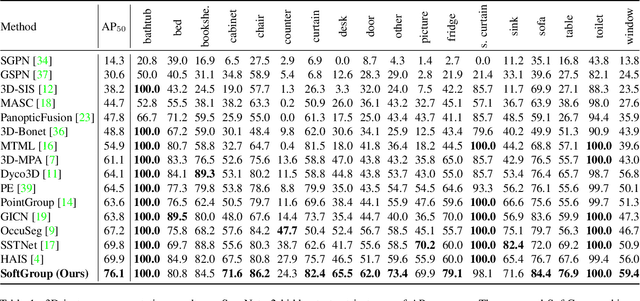
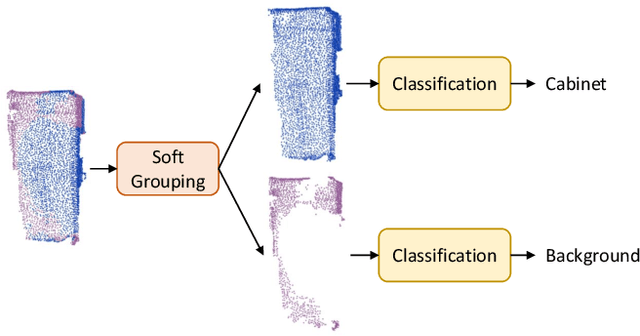
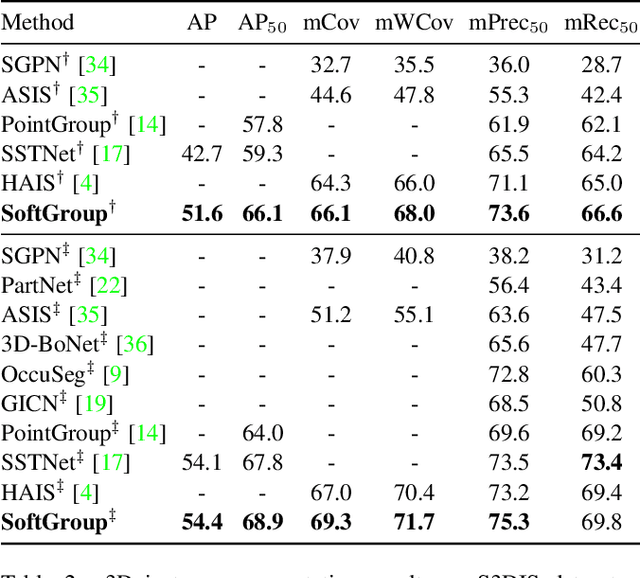
Abstract:Existing state-of-the-art 3D instance segmentation methods perform semantic segmentation followed by grouping. The hard predictions are made when performing semantic segmentation such that each point is associated with a single class. However, the errors stemming from hard decision propagate into grouping that results in (1) low overlaps between the predicted instance with the ground truth and (2) substantial false positives. To address the aforementioned problems, this paper proposes a 3D instance segmentation method referred to as SoftGroup by performing bottom-up soft grouping followed by top-down refinement. SoftGroup allows each point to be associated with multiple classes to mitigate the problems stemming from semantic prediction errors and suppresses false positive instances by learning to categorize them as background. Experimental results on different datasets and multiple evaluation metrics demonstrate the efficacy of SoftGroup. Its performance surpasses the strongest prior method by a significant margin of +6.2% on the ScanNet v2 hidden test set and +6.8% on S3DIS Area 5 in terms of AP_50. SoftGroup is also fast, running at 345ms per scan with a single Titan X on ScanNet v2 dataset. The source code and trained models for both datasets are available at \url{https://github.com/thangvubk/SoftGroup.git}.
 Add to Chrome
Add to Chrome Add to Firefox
Add to Firefox Add to Edge
Add to Edge